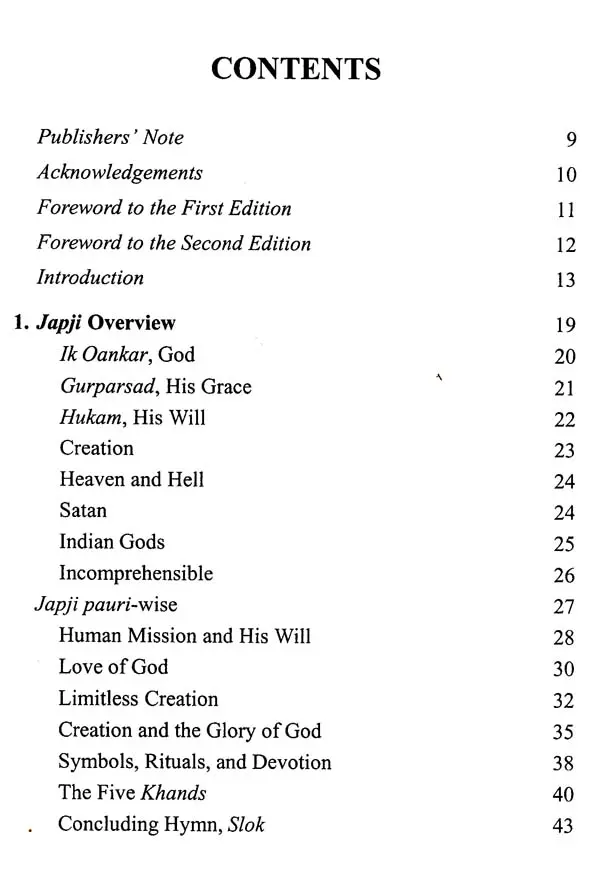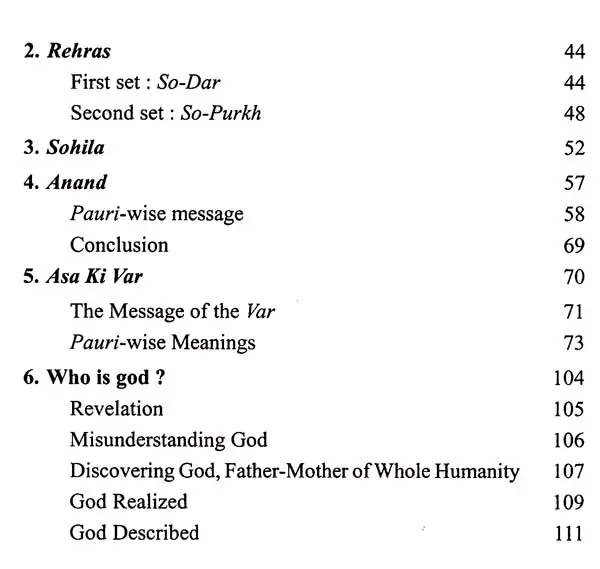
The Message of Gurbani
Book Specification
| Item Code: | UAZ713 |
| Author: | Gurbakhsh Singh |
| Publisher: | Singh Brothers, Amritsar |
| Language: | English |
| Edition: | 2018 |
| ISBN: | 9788172053802 |
| Pages: | 112 |
| Cover: | PAPERBACK |
| Other Details | 8.50 X 5.50 inch |
| Weight | 160 gm |
Book Description
2. Human beings have always desired to live a long, happy and meaningful life. For this, the first thing they needed was food and physical comfort. This, of course, depended upon weather, which is controlled by sun, rain, winds, etc. First human beings, therefore, started the worship of the weather elements as gods. In due course of time, people realized that they are not just other animals; they have been provided with unique faculties and they command a special status on the earth. Therefore, their life is not just to be lived as animals live, i.e. eat, grow, produce children, get old, complete the biological cycle and die. They must have a higher purpose of life. This thought led to the revelation that they, as human beings, have a spiritual goal to achieve in their lives. Religions were thus born.
According to a simple definition of a religion, it may be defined as a package of what is needed for leading a virtuous life, that assures everlasting happiness to one's soul here and in the next world (after death). This package, a set of beliefs, instructing do's and don'ts, of course, is different for different faiths. Many of them, in one form or the other, believe that Almighty e created this universe. He has reserved Heaven for the faithf God people and those who lead a virtuous life. Those who ignore Him and His directions (called faith) will end in Hell. Some religion, however, do not involve God. They preach a life of restraint and meditation for freedom from pains and sorrows. Their goal al is to live in everlasting peace here and hereafter.
Religion is supposed to preach that all people, being the creation of the same Father-Mother, should have mutual love a brothers and sisters. It should unite people belonging to differen nations, races and ethnic groups into one big family called humans. However, religions instead of decreasing have increased our ego, which has divided us into mutually hating groups. The message of Japji is that submitting oneself to His will can destroy our ego and permit the growth of love for humanity in the mind. It, therefore, helps people to move on the path of peace and realize the mission of human life.
3. Japji was composed by Guru Nanak Dev (1469-1539) during the last phase of his life when he settled at Kartarpur, Punjab, Pakistan. Earlier, he had the revelation of the divine message that all people are equal, whatever their race, country, caste, or creed. No one can claim a franchise on the Creator, the Director of this universe; anyone who loves Him (by any name) realizes Him. After this the Guru toured for about two decades to meet religious preachers of different faiths and share this revelation with them. He visited important holy places in India and abroad, including Mecca and Medina in the West, Ceylon (Sri Lanka) in the South, and Tibet in the Himalayas.
The message of the Guru he shared with the masses is very simple and easy to understand. To explain it, he founded the institutions of sangat and pangat. Sangat is a congregation where all people, irrespective of their faith, caste, creed, status, etc.
Book's Contents and Sample Pages















